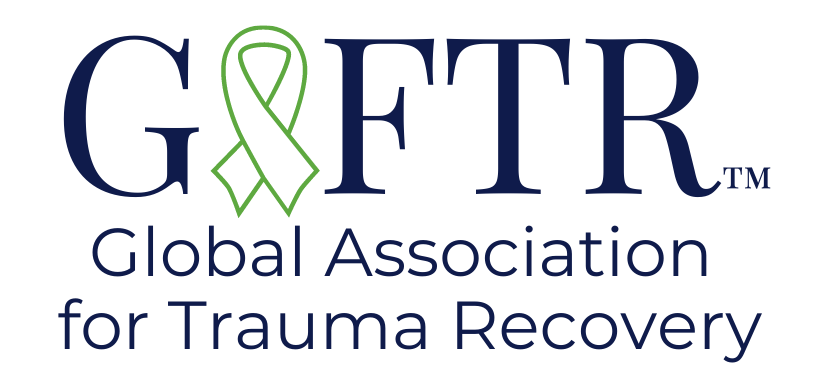The Four Fs of trauma
About the four fs
In a trauma situation, people tend to do one of four things. We call them the Four Fs of Trauma. You may be familiar with the terms, fight or flight, or even fight, flight, or freeze in response to danger. But there is a fourth, less commonly known term; fawn.
Your trauma response is an automatic reaction to danger that evolved over thousands of years as a key survival tool. Think back to caveman days and saber-toothed tigers. The trauma response is there to help keep you alive by preparing your body to react to danger in a split second.

fight
Those that tend towards the fight response believe that if they establish power over the threat, it will result in security and control. This response may feel like an adrenaline rush, accompanied with a desire to defend oneself through fighting, yelling at, or controlling others. The thought behind this response is “I need to eliminate the threat before it eliminates me.” Behaviors that might indicate this trauma response are:
flight
Those that engage in this trauma response, cope with a threat by running from or fleeing the situation. People engaging in a flight response often report difficulties with relaxation and sitting still as they are constantly worrying, rushing, hiding, or panicking when they feel threatened. The thought behind the response is, “I need to run from the situation before it can hurt me.” Behaviors that might indicate this trauma response are:

freeze
When faced with a threatening situation, those that tend towards this trauma response unconsciously detach from the situation by “freezing” or spacing out. The body can feel rigid and become immobilized by the stress. This way of dealing with perceived danger may result in difficulty making decisions or getting motivated. The thought behind this response is “If I don’t do anything, the threat cannot hurt me.” Behaviors that might indicate this trauma response are:
fawn
Those that tend to the fawn response avoid or deal with conflict through “people-pleasing.” They also experience difficulties in saying no and are afraid to share what they really think or feel in fear of how others might perceive them. They also are so accommodating of other’s needs, that they tend to ignore their own. The thought behind this response is, “If I can appease this person, I can be safe from conflict or pain.” Behaviors that might indicate this trauma response are:

How the Four Fs affect your brain and body
The part of your brain called the amygdala, responds to fear and stressful situations by sending a warning signal to another part of the brain, the hypothalamus. It’s like having a mission control in your brain.
When the hypothalamus receives the message, it triggers the trauma response. This turns on the autonomic nervous system, the part of the nervous system that functions without you having to think about it. It is divided into two branches — the sympathetic and parasympathetic nervous system.
The sympathetic nervous system helps you to take action by sending a message to your adrenal glands to release the stress hormones, cortisol and adrenaline. This surge of hormones prompts you to react to a bad situation by defending yourself or running away.
If your defense system determines you can’t safely flee or fight, it may respond with freeze mode. When this happens, the parasympathetic nervous system stops your ability to act. It slows down your heart rate and leads you to have a freeze response as a protective measure.
When one of the Four Fs is triggered, you may notice signs of these reactions in your body, including:
Over time, repeated trauma reactions can turn into chronic stress. This can lead to health problems, including:
Coping With the Four Fs
We experience stressors on a daily basis that can trigger one of the Four Fs. Here are a few ways to help manage the stress and calm down from triggers.
Mindfulness: Being mindful helps you pay attention to the present rather than replaying the past or worrying about the future. This is typically done through meditation and breathwork.
Grounding: Grounding, similar to mindfulness, helps you reconnect with a sense of safety using your senses. One way to do this is to focus on five things you can see, four you touch or feel, three you hear, two you smell, and one you can taste. This is sometimes called the 5-4-3-2-1 exercise. You can also practice grounding by concentrating on how your feet feel flat on the floor or your butt on your seat.

Meditation: Meditation is simpler (and harder) than most people think. Here are some tips for getting started:
1) Have a seat
Find place to sit that feels calm and quiet to you. It’s best not to lie down as that often ends in falling asleep.
2) Set a time limit
If you’re just beginning, it can help to choose a short time, such as five or 10 minutes. If that feels daunting, start with one to three minutes.
3) Pay attention to your body
How you sit doesn’t matter as long as you are in a comfortable position that you can stay in for several minutes. Relax your hands in your lap or on the arms of a chair. Eyes closed to avoid distractions.
4) Focus on your breath
Focus on your breath as you inhale and exhale. Be sure you are belly breathing and not diaphragmatically breathing. Deep, full breaths.
5) Center the wandering mind
Inevitably, your attention will wander to other places. When you notice your mind wandering, simply guide it back to focusing on your breath without judgement or negativity.
Breathing exercises: According to The American Institute of Stress, 20 to 30 minutes of belly breathing each day will reduce anxiety and stress.
- Find a comfortable, quiet place to sit or lie down.
- Place one hand on your upper chest and the other hand on your belly, below the ribcage.
- Allow your belly to relax, without forcing it inward by squeezing or clenching your muscles.
- Breathe in slowly through your nose. The air should move into your nose and downward so that you feel your stomach rise with your other hand and fall inward (toward your spine).
- Exhale slowly through slightly pursed lips. Take note of the hand on your chest, which should remain relatively still.
- Trauma Response (The 4 F’s – Fight, Flight, Freeze, and Fawn) – https://www.hricdubai.com/trauma-response-the-4fs/
- Fawning: The Fourth Trauma Response After Fight, Flight, Freeze – https://www.mindbodygreen.com/articles/the-fight-flight-freeze-fawn-trauma-responses
- 8 Deep Breathing Exercises to Reduce Anxiety – https://www.verywellmind.com/abdominal-breathing-2584115#citation-7
- What is Mindfulness? – https://www.mindful.org/what-is-mindfulness/
- Fight, Flight, Freeze or Fawn? Trauma Responses – https://childhoodtraumarecovery.com/anxiety/trauma-responses-fight-flight-freeze-or-fawn/
